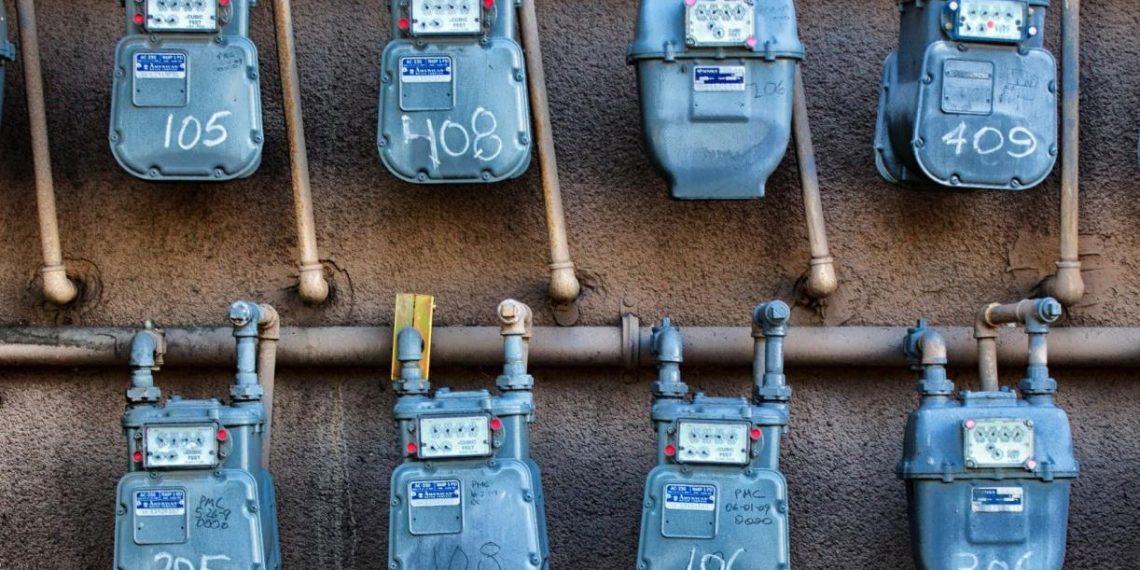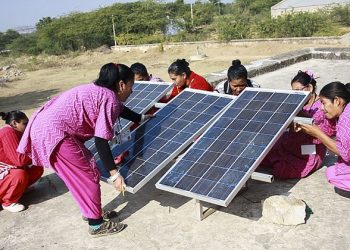Existing and longstanding social and economic inequities result in climate change disproportionally endangering those who are least responsible for it.
Globally, equitable climate action requires that the United States, as the biggest historical emitter of greenhouse gases, significantly cut domestic emissions while increasing its international finance commitments. Making the transition to net zero emissions within the United States — in a way that addresses historic inequity and delivers a just distribution of costs and benefits — will require addressing decades of systematic discrimination. The federal government can play an essential role by effectively implementing equity focused climate policy and driving climate investment to increase equity. Climate spending alone will not deliver on needed systemic change. However, intentionally directing the expected economic, public health and quality of life benefits of clean energy toward those who disproportionately carry the costs of a dirty energy system can begin to address inequity.
U.S. Clean Energy Transition Must Reckon with Existing Energy System Inequity
More than one of every four U.S. households faces a high energy burden, spending at least 6% of household income on energy, compared to a national average of 3.1%. A disproportionate number of Hispanic, Black and Native American households face a high energy burden compared to their share of households nationally, with median household energy burdens of 3.5%, 4.2% and 4.2% respectively, compared to 2.9% for white households, all according to the American Council for an Energy-Efficient Economy.
While clean energy is increasingly available, access to it is not equal. Solar technology, for example, has mostly benefited higher-income households, which were four times more likely to adopt it than low-income families. That is in spite of the fact that 42% of residential rooftop solar potential is in low- to moderate-income communities. This is due to a range of barriers to using solar technology, including high upfront costs and hard-to-access financial incentives, a lack of homeownership which can make it more challenging to benefit from solar power and a lack of rooftop access.
New clean energy spending and clean energy jobs are critical, but there is no guarantee of an equitable distribution of the economic opportunity that goes along with it. While racial and gender diversity differs by sector, there is an apparent lack of gender diversity across all energy sectors. For example, a 2019 survey found that only 26% of the solar industry workforce identified as women in comparison to 47% in the broader national workforce. The solar industry also has a higher than average wage gap and reflects the dismal representation of women and people of color in leadership positions nationwide. This represents a broader challenge of not only employing a diverse workforce, but also cultivating diversity at the level of business ownership and leadership, such as through minority and women-owned business enterprises.
Congress and the Federal Government are Ready to Invest
President Biden started his term by committing to address these inequities through support for equitable climate action and environmental justice. The administration’s Justice40 initiative, which pledges to deliver at least 40% of benefits from federal climate investments to disadvantaged communities, comes at an inflection point in the country and federal government’s reckoning with systematic discrimination, its relationship with climate and environment, and its generational effects.
The federal government can already help disadvantaged communities by targeting investments with long-lasting benefits through direct payments such as the Weatherization Assistance Program, project-based grants, loans, loan guarantees including the Electric Infrastructure Loan and Loan Guarantee Program, and technical assistance and training like through the Equity in Energy initiative.
Congress is considering massive investments in the clean energy transition through these and new programs. Congress recently passed the Infrastructure Investment and Jobs Act, which includes important clean energy transition spending that can improve equity. One example is publicly accessible EV charging, with priority given to rural, low- and moderate-income neighborhoods and areas with higher numbers of multiunit dwellings over single family homes and private parking spots. If executed intentionally and successfully, public EV charging can increase the accessibly of EVs and their benefits for these communities. Public EV charging is also important for electrifying vehicles used for ride-hailing, which are often used more intensively than other cars and by lower-income drivers.
But more needs to be done in terms of scale of investment in both the clean energy transition and energy equity. Congress is currently considering the Build Back Better bill. This legislation would invest hundreds of billions in climate programs that can deliver for marginalized and disadvantaged communities, such as a $29 billion fund to finance zero-emission technologies, including any energy property and vehicles, for low-income and disadvantaged communities, and $3 billion for climate justice block grants. These are important investments in reaching underserved communities in the energy system, which is a foundational prerequisite to an equitable clean energy transition.
Targeted Spending Alone Is Not Enough
Effective, equitable clean energy spending needs to be paired with intentional, enabling policy and process investments. Disadvantaged communities experience multiple and overlapping social and economic inequities that can limit the effectiveness of this funding, including a lack of access to capital, barriers to business ownership and exclusion from decision-making. To remedy this, federal policymakers and other authorities should consider:
- Data Quality and Availability: Clean energy spending can be targeted equitably through the implementation of effective, data-driven, results-focused programming on energy equity driven by cultivating metrics, reporting requirements, qualitative and quantitative data sources, and analysis that is grounded in the experience and input of target households and communities.
- Local Capacity Building: The federal government should provide funding and technical assistance to build the capacity of states, local governments, community groups and other representatives of disadvantaged communities to lead on co-creating opportunities, applying for federal funds and engaging with or implementing programming.
- Community Engagement: Federal actors should bring the interests of communities that have historically been excluded to the forefront of federal spending, while equipping and empowering these actors to lead in program design, implementation and monitoring. Incorporate advance planning, community-led project design, and funding for robust, inclusive, respectful, culturally sensitive and intentional community partnership.
- Labor and Procurement Policies: Federal actors can ensure clean energy spending creates pathways to high-quality jobs for a diverse workforce by requiring jobs created through federal spending to meet wage standards, protecting the right to organize, enforcing anti-harassment and antidiscrimination protections, encouraging local hiring and engaging minority-owned and women-owned businesses, and training and equipping currently underrepresented members of the clean energy workforce to capitalize on new opportunities in the sector.
- Inclusive Financing: Federal policies can support inclusive financing approaches to deploy clean energy and energy efficiency in low-income communities; Black, Latino and Indigenous communities, as well as other communities of color.
There is More to Learn
The most impactful policies are grounded in input from communities and stakeholders and the best available analysis. As the federal government turns more aggressively to tackle climate and energy equity issues, it is critical to understand the economic impacts of proposed pathways to achieve U.S. clean energy goals, particularly in disadvantaged communities. This raises outstanding questions about how some of the enabling programming discussed above may impact clean energy deployment and job creation. WRI intends to address some of these questions with an upcoming analysis of the economic impact of decarbonization policies that prioritize disadvantaged communities and the creation of quality U.S. jobs.
An Opportunity that Can’t Afford to be Missed
Under the 117th Congress and Biden administration, the federal government is looking to invest unprecedented federal funding as part of an historic commitment to a cleaner and more equitable energy system. The clean energy transition is both constrained by and dependent on addressing systemic racism and wealth inequity in the United States. Clean energy investments that deliver benefits to marginalized, underserved or disadvantaged communities are central to building a future that is less vulnerable to climate change and more prosperous for all.



